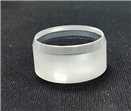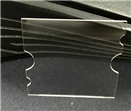

Time:2024-10-21
Sapphire glass, as a material in the industrial field, has been widely used in various fields such as smartphones, smartwatches, wristwatches, optical instruments, and semiconductor devices due to its hardness, wear resistance, and excellent transparency. The processing process is not only a science, but also an art, requiring high precision and strict requirements at every step. The key requirements in the processing will be discussed in detail below.
1、 Raw material preparation and purification
The main raw material for sapphire glass is high-purity aluminum oxide (Al ? O3), which is a colorless and transparent crystal. Purification of raw materials is a crucial step before processing. Impurities in raw materials directly affect the performance of the product, therefore, advanced chemical and physical methods are required in the purification process to ensure that the purity of alumina powder meets high standards. This step not only requires precise equipment, but also requires operators to have rich experience and strict quality control awareness.
2、 Melting and Crystallization
The purified alumina powder is sent to a high-temperature electric furnace, with a temperature of over 2000 ℃ to completely melt it into a liquid state. During the melting process, precise control of temperature and time is required to ensure the purity and uniformity of the melt. Subsequently, by slowly cooling the molten alumina liquid, it gradually crystallizes to form large-sized single crystal sapphire. This process is sensitive to temperature control, and any small fluctuations can lead to a decrease in crystal quality.

3、 Cutting and Grinding
The large sapphire crystals grown require precise cutting and grinding to be processed into the desired shape and size. Due to the high hardness of sapphire glass, traditional tools are unable to handle it, so diamond tools are usually used for cutting and grinding. This step requires high precision and stability to ensure the flatness and dimensional accuracy of the cutting surface. At the same time, different thicknesses of grinding powder and polishing solution need to be used during the grinding process to gradually remove the rough parts of the surface until a mirror effect is achieved.
4、 Chemical vapor deposition
In certain specific applications, such as the manufacturing of high-precision optical components and electronic devices, it is necessary to use chemical vapor deposition to deposit sapphire thin films on substrates. The CVD method can accurately control the thickness and composition of thin films, and is an important technology for manufacturing high-performance sapphire glass. During this process, it is necessary to strictly control parameters such as the type, flow rate, temperature, and pressure of the reaction gas to ensure the quality and performance of the film.
5、 Physical strengthening and heat treatment
In order to improve the mechanical strength and durability of sapphire glass, physical strengthening and heat treatment processes are also required. These processes include ion exchange and heat treatment at high temperatures to improve the internal structure of the material. During the physical strengthening process, sapphire glass is heated to a certain temperature and rapidly cooled, creating a compressive stress layer on its surface, thereby improving its impact resistance and wear resistance. Heat treatment helps to eliminate residual stresses inside the material and improve overall stability.
6、 Cleaning and testing
The processed sapphire glass needs to undergo strict cleaning and testing. The cleaning process uses equipment such as ultrasonic cleaning machines to remove small particles and impurities on the surface, ensuring the cleanliness of the product. Testing includes multiple indicators such as transparency, hardness, and wear resistance to ensure that product quality meets standards. In addition, a visual inspection is required to remove defective products that do not meet the requirements.
7、 Finished product processing and packaging
Sapphire glass is processed into product forms such as mobile phone screens, watch mirrors, etc. through processes such as cutting, punching, and edging. After processing, protective treatment such as film covering is also required to prevent damage during transportation and use. Pack the finished products into bags and boxes, and store them for sale.
The processing of sapphire glass involves multiple steps, including raw material preparation, melting and crystallization, cutting and grinding, chemical vapor deposition, physical strengthening and heat treatment, cleaning and testing, as well as finished product processing and packaging. Each step requires strict operating standards and quality control measures to ensure the performance and quality of the product.






Tel
Mobile phone
Customer service
TOP